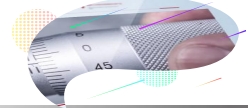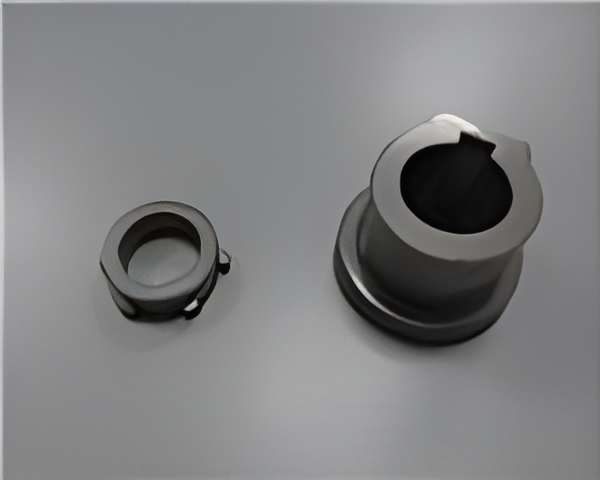There are many manufacturing processes for producing components, and the choice of the appropriate process depends on factors such as the product’s performance, quantity, and size. Generally speaking, for small-sized, complex-shaped, and large quantity components, metal injection molding is suitable for production. However, there are also certain limitations that cannot be exceeded.
Injection molding can meet the design inspirations of designers more effectively in terms of structure because the design of MIM parts can be as flexible as plastic injection molding, unaffected by traditional metal forming processes, thereby eliminating much machining. This makes it particularly suitable for complex parts, those with weight requirements, expensive raw materials, and assemblies of multiple parts into one component.
Shanghai Jun Kun New Materials Co., Ltd. has undertaken many new product developments, many of which involve converting machined parts or industrial plastic nylon parts into MIM injection molding processes. This transition offers significant cost advantages. In an era of transparent information and profit margins, cost is crucial for a physical entity, determining its market competitiveness.
Below are the detailed considerations we need to take into account when designing injection molded parts.
Varying Thicknesses in MIM parts
Many components have varying wall thicknesses, and there should be transition sections between different thicknesses to avoid sudden increases or decreases. The transition should be gradual. Ideally, the wall thickness of injection molded parts should be consistent to prevent issues like warping and cracking caused by different thicknesses. Additionally, injection molding sintering results in shrinkage, making it challenging to control wall thickness, which can affect part dimensions and tolerances.

Draft angle
Draft angle refers to the slight angle on the surface, parallel to the direction of movement of the molded part, with particularly precise requirements for core pins. The draft angle is designed to facilitate the ejection of molded parts. Typically, draft angles range from 0.5 to 2 degrees. In practice, the draft angle increases with the complexity of the injection molded part.
Chamfer and fillet
Chamfer and fillet can reduce stress at the intersection of structural features, eliminating sharp corners that may cause cracking or corrosion, facilitating material flow into the mold, aiding in part ejection from the mold cavity, and facilitating the molding process.
Threads, holes, and slots
Injection molding can directly produce internal and external threads, holes, and slots, but this may increase the cost of the mold.
Sprue
For MIM injection molded parts, the material needs to be injected into the mold through sprues, which are generally much larger than those used in plastic molding. Therefore, each MIM injection molded part needs to have clear sprue design. Post-processing is usually required for sprues, which can be designed as recessed or smoothed. MIM injection molding can achieve multi-cavity injection, so sprue sizes may need to be adjusted later. Generally, sprues are designed on the thickest wall of the injection molded part.
Parting lines
Parting lines for all injection molded parts are perpendicular to the part, making it easier to remove the part from the mold. These parting lines often become visible lines on the part’s surface, which is an inevitable result of mating two halves of the mold. If the structure of the injection molded part is only on one half and the other half has no structure, the parting line can be hidden at the bottom of the part.
Logo Design
Many companies collaborate with powder metallurgy manufacturers and need to have their company name/logo imprinted on powder metallurgy products. It’s important to choose an appropriate surface on the component in advance.
Powder metallurgy manufacturers have strict atmospheric requirements for sintering furnaces. All powder metallurgy products undergo shrinkage after sintering. Injection molded parts shrink much more compared to powder metallurgy pressing, typically around 20%. This means that the raw part for injection molding is much larger, and it shrinks significantly during sintering. To minimize distortion caused by such deformation, support structures must be added to the injection molded parts.
Strigent Tolerances
The tolerance for injection molded parts after sintering is typically between 0.3% to 0.5%. If a particular feature’s tolerance requirement is tight, it can be achieved through subsequent machining. MIM injection molding is used to reduce machining costs, and the injection molded material can undergo processes such as cutting, threading, drilling, finishing, grinding, welding, heat treatment, etc.

Choose a professional MIM supplier
We have the capability for independent material feedstock development, allowing us to customize and optimize alloy formulations according to customer requirements
With nearly 20 years of production experience, we have continuously refined our process and improved production efficiency, ensuring product quality and timely delivery.
Our dedicated team of engineers, technicians, and quality control experts provides comprehensive technical support and service to our customers, ensuring smooth production processes and meeting customer needs.
To learn more about MIM technology and our manufacturing services, please don’t hesitate to contact us. Whether you need customized parts, technical consultation, or a quotation, our professional team is ready to support you. Reach out to us today to discuss your project requirements and find the best solution together.


